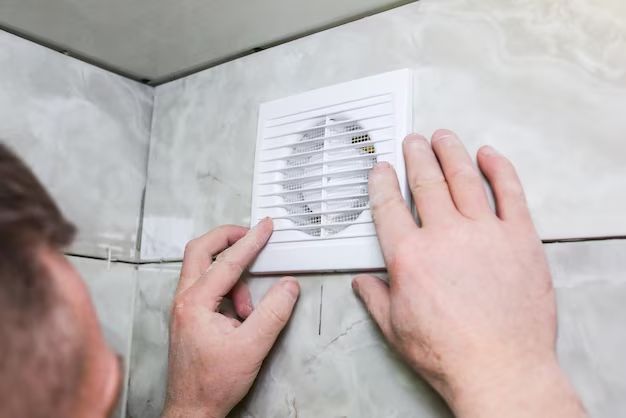Bathroom exhaust fans serve an important purpose in homes by removing moisture, odors, and pollutants from bathrooms. A common question homeowners have is where does the air drawn in by bathroom exhaust fans vent to? There are a few main options for venting bathroom exhaust fans:
Page Contents
Venting to the Outdoors
Venting bathroom exhaust fans to the outdoors is the recommended method by building codes and HVAC experts. This ensures that moisture, odors, and other pollutants from the bathroom are completely removed from the home’s air. There are a few ways to vent fans outdoors:
- Roof venting – Fans are ducted vertically and a hood is installed on the roof to vent air out.
- Gable venting – Ductwork runs horizontally and vents out a gable end wall.
- Soffit venting – Ducts route to a soffit vent installed under the eaves.
Roof venting provides the shortest duct run, but gable and soffit vents may be preferred for aesthetic reasons or to avoid roof penetrations. The ductwork should be insulated to minimize condensation and sized according to the fan’s airflow rating.
Venting to an Attic
Sometimes bathroom fans are vented into attics rather than directly outdoors. This is generally not an ideal solution, for a few reasons:
- Moisture can accumulate in the attic leading to mold growth and wood rot.
- Odors and pollutants may find their way back into living spaces via air leakage.
- Attic venting is not up to code in many areas.
However, attic venting may make sense in certain circumstances if the attic is properly air sealed and has sufficient ventilation to the outside. This ensures moisture and pollutants can exit via passive attic vents. Overall, attic venting should be considered a backup option when roof or soffit venting is not feasible.
Recirculating with a Filter
Some bathroom exhaust fans are designed to recirculate air back into the bathroom through a filter, rather than venting it out. Recirculation fans pull air through a charcoal or HEPA filter meant to remove odors and particles. However, recirculation fans have some downsides:
- They do not reduce humidity or moisture in the bathroom.
- Filters need regular replacement.
- They are less effective at removing smells and chemicals.
For these reasons, recirculating fans are not recommended as a primary exhaust method in bathrooms. They may be useful as a supplementary fan for odor control in addition to an exterior vented fan, or in situations where exterior venting is not possible.
Venting to a Central Return
Rather than venting directly outside, some bathroom fans connect to the central HVAC return in the home. This dumps exhaust air from the bathroom into the return ductwork where it mixes with air from the rest of the house. There are some pros and cons to consider with return venting:
Pros
- No need to install separate ductwork.
- Moisture spreads through the home rather than collecting in one area.
Cons
- Odors and chemicals circulate through the HVAC system.
- Increased air particulates may dirty HVAC components.
- Moisture can condense on cold ductwork leading to mold.
For these reasons, HVAC experts recommend against return venting bathroom exhaust fans in most cases. However, it may be an acceptable strategy in certain dry climates or when proper HVAC filters are installed and maintained.
Venting Multiple Fans Together
It is common to vent multiple bathroom exhaust fans through a shared duct in a home. For example, two bathrooms on the second floor may route to a single roof vent. This helps minimize roof penetrations. However, there are guidelines to follow when combining ductwork:
- The duct should be sized according to the airflow capacity of all fans venting through it.
- Dampers should be installed to prevent air backflow through idle fans.
- Fans should not share ducting with kitchen range hoods which produce grease buildup.
- Horizontal duct runs should slope back towards the fans to allow condensation to drain.
When installed properly, a shared exhaust duct can vent multiple bathrooms effectively. But improper duct sizing or layout can reduce fan performance and allow backdrafting between rooms.
Conclusion
In summary, the best practice for bathroom exhaust fans is to vent air directly to the outdoors through the roof, soffit, or gable. This removes humidity and pollutants from the home most effectively. Venting into attics or HVAC returns is generally not recommended except in special circumstances. Recirculation fans also have limitations for odor and moisture control. Following manufacturer specifications for duct sizing and layout is crucial for proper venting, especially when combining multiple fans on shared ducting.
